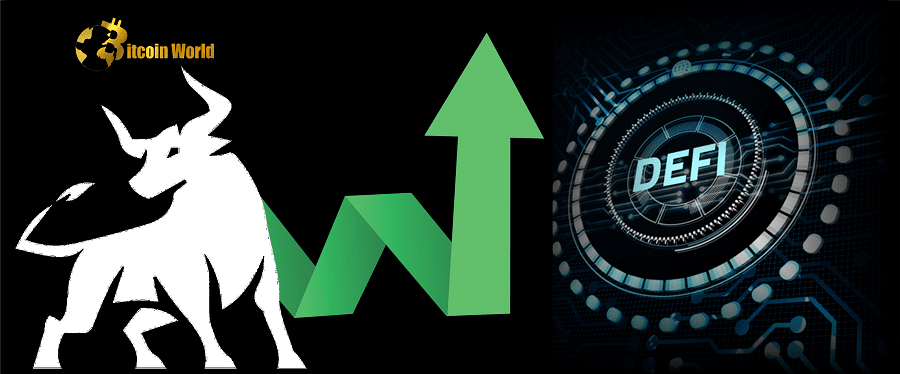Are you ready for the next crypto bull run? If you’re wondering what will fuel the next surge in the digital asset space, look no further than Decentralized Finance (DeFi). According to crypto hedge fund giant Pantera Capital, DeFi is not just surviving the crypto winter – it’s poised to be the driving force behind the next wave of growth.
Why DeFi? Pantera Capital Bets Big
In their latest newsletter, Pantera Capital’s chief investment officer (CIO) Joey Krug made a compelling case for DeFi. He argues that after the tumultuous events of 2022, which saw numerous crypto collapses, DeFi stood strong, proving its robustness and potential.
2022 was undeniably a year of reckoning for the crypto world. But amidst the chaos, a stark contrast emerged. While centralized crypto entities faltered, DeFi protocols not only weathered the storm but demonstrated inherent strengths that traditional finance could learn from.
DeFi’s Resilience: A Silver Lining in the Crypto Winter
Krug highlights a crucial observation: despite the price downturns across the crypto market, decentralized finance protocols remained remarkably stable. Think about major DeFi players like Compound, Aave, and Maker. These platforms, which operate on the principle of lending to largely anonymous parties, did not collapse. This resilience begs the question: What made DeFi so robust when centralized counterparts crumbled?
The Secret Sauce: Code, Collateral, and Control
According to Krug, DeFi’s success boils down to a few key factors:
- Forced Collateralization: DeFi protocols operate on the principle of requiring users to provide collateral before borrowing. This fundamental mechanism acts as a safety net, ensuring that lenders are protected even if borrowers default.
- Aggressive Risk Controls: These protocols are built with strict, automated risk management systems. Unlike centralized entities that might rely on human judgment (which can be fallible), DeFi protocols enforce risk controls algorithmically and transparently.
- Code Over Trust: DeFi protocols are governed by code, not promises. As Krug aptly puts it, DeFi isn’t about “trust me” – it’s about “you don’t have to trust us.” The code is open source, auditable, and operates based on predefined rules, eliminating the need to rely on the reputation or goodwill of a central authority.
This inherent transparency and reliance on code present a stark contrast to the failures seen in centralized crypto lending platforms. The irony, as Krug points out, is that centralized entities often dismissed DeFi’s stringent risk controls as “inefficient.” However, the events of 2022 painted a different picture, proving that these very controls were DeFi’s saving grace.
The Human Element vs. Immutable Code: A Lesson Learned
The failures of centralized crypto lenders often stemmed from overconfidence in human judgment, lack of transparency, and ultimately, excessive risk-taking in pursuit of higher yields. DeFi, by its very nature, minimizes these human fallibilities. The code dictates the rules, and those rules are enforced consistently and transparently for everyone.
As Krug emphasizes, DeFi protocols can’t rely on subjective appeals like “trust me, I went to MIT and want to donate everything to charity.” Instead, DeFi operates on the principle of building systems that work based on sound economic principles, in the open, and for a global audience. This “can’t be evil” ethos, reminiscent of Google’s early motto, underscores the inherent transparency and accountability built into DeFi.
DeFi’s Path Forward: Addressing the Hurdles
While Pantera Capital is bullish on DeFi, they also recognize that it’s not without its challenges. To truly unleash its potential and drive the next crypto bull market, DeFi needs to overcome a few key obstacles:
- User Experience (UX) of Crypto Wallets: Navigating crypto wallets can still be daunting for the average user. Improving the user-friendliness and accessibility of wallets is crucial for wider adoption.
- Ethereum (ETH) Transaction Fees: High gas fees on the Ethereum network can be a barrier to entry, especially for smaller transactions. Solutions like Layer-2 scaling solutions are working to address this, but further progress is needed.
- Fiat Onramps: Seamlessly converting traditional fiat currency into cryptocurrency and vice versa remains a point of friction. Improving the ease and efficiency of fiat onramps is essential for bringing more users into the DeFi ecosystem.
Addressing these issues is not a simple task, and Krug estimates that it will take another two to three years to develop and implement robust solutions. However, he views these challenges as opportunities. The innovations that emerge from solving these problems will not only enhance DeFi but also create exciting investment prospects.
The Future is DeFi: A More Efficient and Open Financial System
Pantera Capital’s vision is clear: DeFi is not just a passing trend; it’s the foundation for a new, more open, and efficient global financial system. By tackling the current challenges and continuing to innovate, DeFi has the potential to revolutionize how we interact with finance, making it more accessible, transparent, and equitable for everyone.
As we look ahead, the future of crypto may very well be intertwined with the growth and evolution of DeFi. Keep an eye on this space – it’s where the next wave of crypto innovation and potentially, the next bull market, will originate.
Disclaimer: The information provided is not trading advice, Bitcoinworld.co.in holds no liability for any investments made based on the information provided on this page. We strongly recommend independent research and/or consultation with a qualified professional before making any investment decisions.


